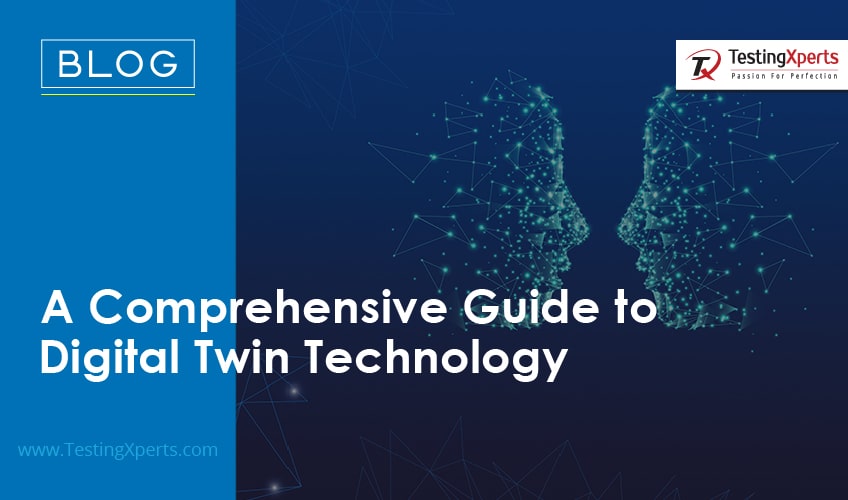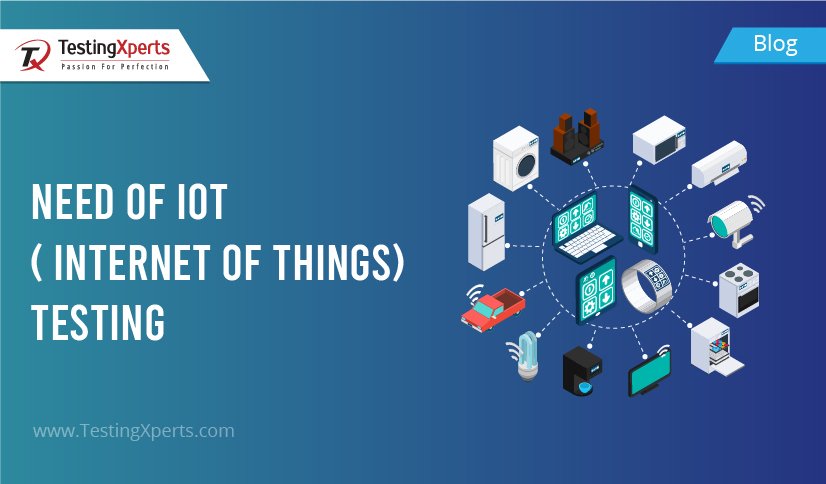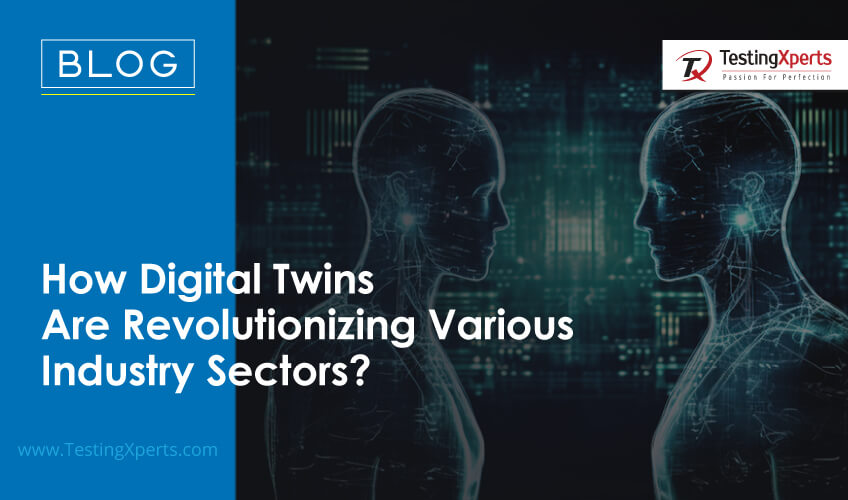
Digital twins have swiftly become game-changing, offering unprecedented insights and predictive capabilities across diverse sectors such as manufacturing, aerospace, healthcare, and more. These digital twins empower organizations to make data-driven decisions, optimize processes, and proactively address potential issues by creating real-time virtual replicas of tangible assets.
The benefits of digital twins lie in their ability to go beyond traditional simulations. Unlike static models, digital twins are dynamic, perpetually evolving to mirror their physical counterparts and bridging the virtual and real gap. As a result, businesses can simulate complex scenarios, optimize performance, and conduct virtual tests to drive innovation and reduce operational costs.
How does Digital Twin Technology Work?
Digital twin technology bridges the physical and digital worlds, allowing businesses to replicate their assets, processes, or systems in a virtual environment.
Here’s a simplified explanation of how this fascinating technology operates:

Data Collection:
The first step involves installing sensors on the physical asset. These sensors can measure various parameters such as temperature, pressure, humidity, speed, etc. The specific parameters depend on the physical asset’s nature and the digital twin’s purpose.
Data Transmission:
The data collected by the sensors is then transmitted in real-time to the digital twin via the Internet of Things (IoT) technology. It ensures the digital twin always mirrors the current state of the physical asset.
Creation of the Digital Twin:
The digital twin is essentially a virtual model of the physical asset, created using advanced software. It accurately reflects the physical asset’s structure, properties, and behaviour. This model is constantly updated with real-time data from the sensors, ensuring it accurately mirrors the current state of the physical asset.
Data Processing and Analysis:
The data transmitted to the digital twin is processed and analysed using Artificial Intelligence (AI) and Machine Learning (ML) algorithms. These algorithms can detect patterns, identify anomalies, predict future behaviour, and make informed decisions.
Action:
The insights derived from the data analysis can be used to optimize the performance of the physical asset, anticipate and prevent potential problems, or simulate and test different scenarios. This leads to improved decision-making and increases operational efficiency.
Feedback Loop:
Any changes made in the digital twin can be executed in the real-world asset through IoT devices, forming a feedback loop between the digital and physical worlds.
Cloud computing plays a critical role in the operation of digital twins. It provides the necessary computing power to process vast amounts of data and allows for the storage, analysis, and accessibility of this data in real-time, irrespective of geographical location.
Digital Twin vs Simulation: Key Differences
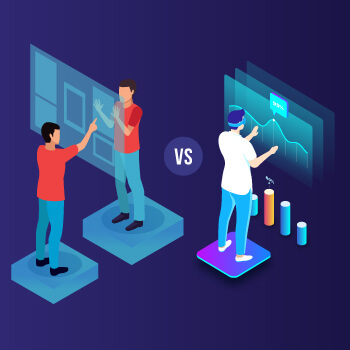
| Simulation | Digital Twin | |
| Data Handling | Simulations use historical or synthetic data. | Digital twins leverage real-time data from IoT sensors attached to their physical counterparts, which makes them dynamic and continuously updated. |
| Functionality
|
It primarily predicts outcomes based on specific conditions. | It predicts outcomes and monitors real-time operations, detects anomalies, optimizes performance, and even implements changes in the physical world through connected devices. |
| Interaction | Simulations are mostly one-time, standalone models for testing specific scenarios. | Digital twins offer ongoing, two-way interaction between the physical and virtual worlds, allowing continuous learning, evolution, and optimization. |
| Integration | Simulations are generally separate from the operation process. | They are fully integrated with their physical counterparts and the broader digital ecosystem. They interact seamlessly with other digital tools, including AI systems like ChatGPT, which, in the retail industry, can use real-time insights from digital twins to deliver personalized shopping experiences. |
Industrial Applications of Digital Twin
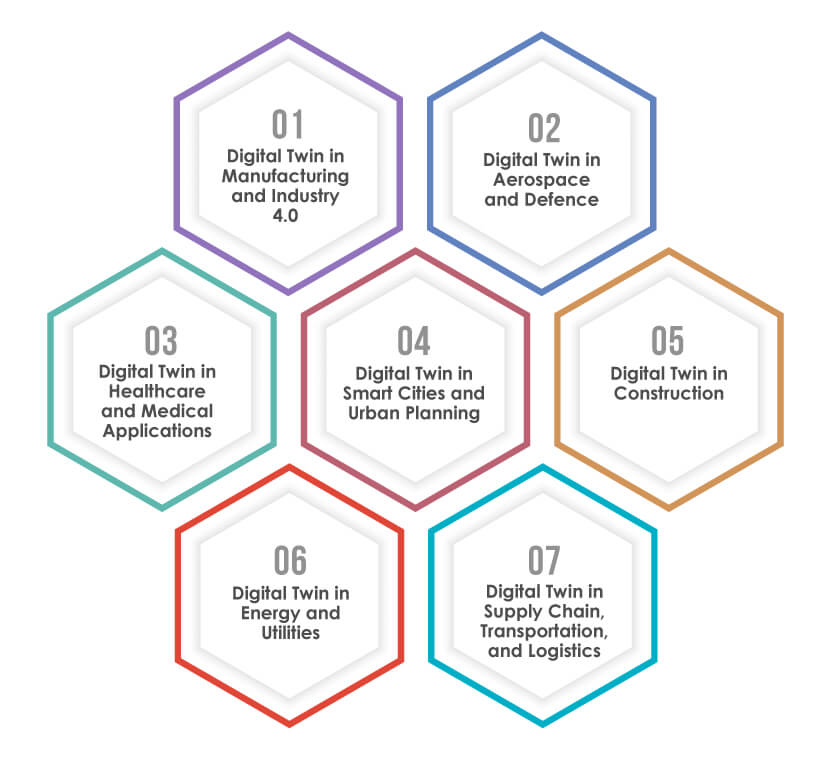
This technology does not focus on a specific industry. Its cross-industry applicability provides unprecedented opportunities for optimization, efficiency, and innovation. Let’s look into its transformative impact across several sectors:
Digital Twin in Manufacturing and Industry 4.0
Digital twins in Manufacturing and Industry 4.0, act as a powerful tool for visualizing, monitoring and optimizing production processes. Manufacturers can identify bottlenecks, simulate changes, and predict equipment failures by creating a digital replica of the entire production line. This leads to improved productivity, reduced downtime, and enhanced product quality.
Digital Twin in Aerospace and Defence
Digital twin in the aerospace and defence industry, digital twins help manage the enormous complexity of aircraft systems. They allow for real-time monitoring of aircraft components, predicting potential failures before they occur, thereby increasing safety and reducing maintenance costs. They also aid in designing and testing new aircraft systems in a risk-free virtual environment.
Digital Twin in Healthcare and Medical Applications
Digital twins in healthcare creates personalized digital replicas of a patient’s health status, allowing doctors to predict disease progression and tailor treatments accordingly. They can also simulate the impacts of different treatment options, providing invaluable information for decision-making.
Digital Twin in Smart Cities and Urban Planning
Digital twins in smart cities constructions can revolutionize urban planning. They can simulate the impacts of various infrastructure changes, optimize traffic flow, and assist in disaster management planning. Furthermore, smart utilities can leverage digital twins to monitor and optimize energy usage, leading to more sustainable cities.
Digital Twin in Construction
Digital twin in construction industry is rapidly gaining traction in the construction industry due to its ability to drive efficiency, optimize processes, and reduce costs. A digital twin in construction is a virtual model of a building or infrastructure created using real-time data from numerous sources such as sensors, drones, and IoT devices.
Digital Twin in Energy and Utilities
For energy and utility companies, digital twins can monitor and optimize the performance of energy infrastructure. Digital twin in energy and utilities industry can simulate and predict the impacts of various operational strategies or environmental conditions. This can improve efficiency, lower maintenance costs, and increase service reliability.
Digital Twin in Supply Chain, Transportation, and Logistics
In the logistics and supply chain sector, digital twins can optimize routing, improve warehouse operations, and predict delivery issues before they occur. Digital twins in the supply chain can create a digital replica, businesses can anticipate problems, test solutions, and make data-driven decisions that increase efficiency and customer satisfaction.
Challenges and Limitations of Digital Twin
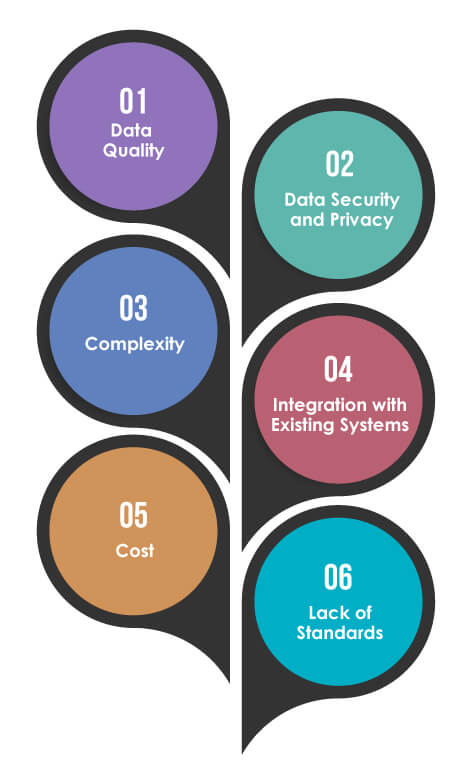
Despite the transformative potential of digital twin technology, it has its challenges and limitations. By understanding these, businesses can better navigate their digital twin journey and unlock its value. Here are some key considerations:
Data Quality:
Digital twins rely heavily on real-time data from IoT sensors. The quality, accuracy, and timeliness of this data directly impact the effectiveness of the digital twin. Data collection or transmission inaccuracies can lead to incorrect insights and actions.
Data Security and Privacy:
With increased data flow, there’s also a heightened risk of data breaches and cyberattacks. Ensuring the security of IoT devices and data transfers is crucial. In addition, the collection and use of data should comply with privacy regulations to avoid legal and ethical issues.
Complexity:
Creating and managing digital twins, especially of large systems, can be complex. They require sophisticated software and hardware and advanced IoT, AI, and data analytics skills.
Integration with Existing Systems:
Digital twins must interact seamlessly with a company’s IT infrastructure. It might require significant changes to existing systems, which can be costly and time-consuming.
Cost:
Implementing digital twin technology can be substantial. It includes the cost of sensors, data transmission and storage, software, and expert personnel.
Lack of Standards: As a relatively new technology, there is a lack of standardized best practices and protocols for digital twins. It can make implementation and interoperability more challenging.
Lack of Standards:
As a relatively new technology, there is a lack of standardized best practices and protocols for digital twins. It can make implementation and interoperability more challenging.
Future Trends and Innovations in Digital Twin
As companies and industries continue to recognize its potential, here are a few trends and innovations that are shaping the trajectory of this technology:
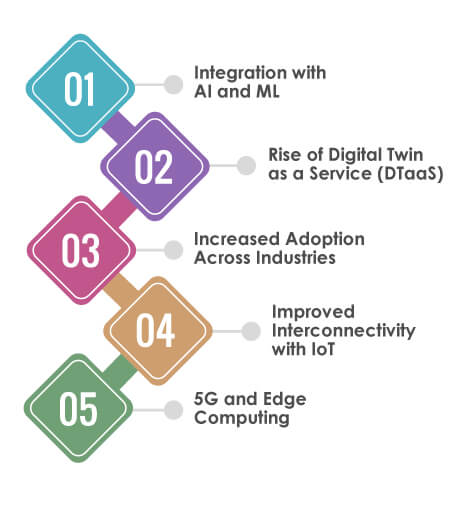
Integration with AI and ML:
As AI and ML capabilities expand, they’ll significantly improve digital twins’ predictive and prescriptive abilities, enabling nuanced data analysis and autonomous decision-making. It can be as futuristic as having AI like ChatGPT communicate with a customer’s digital twin to provide genuinely personalized retail experiences.
Rise of Digital Twin as a Service (DTaaS):
To reduce the high implementation costs and expertise associated with digital twins, we’re likely to see the rise of Digital Twin as a Service. DTaaS will make this advanced technology more accessible and cost-effective, particularly for small and medium enterprises.
Increased Adoption Across Industries:
Digital twin technology’s benefits are gaining recognition across various sectors. More industries will leverage digital twins, from manufacturing to healthcare, retail to urban planning, for operational optimization and strategic decision-making.
Improved Interconnectivity with IoT:
The proliferation of IoT devices provides a massive data source for digital twins, allowing for real-time updates and increased accuracy. The symbiosis between IoT and digital twins will intensify, leading to more complex and interconnected digital twin networks.
5G and Edge Computing:
The advent of 5G and edge computing will further propel digital twin technology. 5G will enhance real-time data transmission and processing, while edge computing will help manage the massive data influx from IoT devices more efficiently. These technologies will make digital twins even more accurate and timely in their predictions and simulations.
Conclusion
In conclusion, digital twin technology has started a new era of transformation and optimization for industrial processes and is one of the best digital technology examples. They have become invaluable assets, offering real-time insights, predictive analytics, and seamless monitoring capabilities that empower organizations to make informed decisions and enhance operational efficiency.
These dynamic replicas enable businesses to simulate complex scenarios, identify potential issues, and optimize performance without disrupting operations by bridging the gap between the virtual and physical worlds. Unlike static models, digital twins continuously learn and evolve, mirroring real-world changes and providing a more accurate representation. This feature allows businesses to anticipate challenges, optimize processes, and drive innovation, ultimately fostering a competitive edge in the market.
How can TestingXperts help with Digital Twin technology?

Comprehensive Testing Solutions:
Our experts offer end-to-end testing solutions specific to the unique requirements of digital twin implementations, ensuring seamless integration and flawless performance.
AI Testing Services:
Leveraging advanced artificial intelligence testing methodologies, our experts validate the AI algorithms integrated into digital twin technology, ensuring accurate predictions and data-driven decision-making.
ML Testing Services:
TestingXperts thoroughly tests machine learning components embedded within digital twins, validating their adaptive capabilities and ensuring optimal performance.
IoT Testing Services:
As IoT plays a pivotal role in digital twin technology, our QA professionals provides robust IoT testing services to ensure seamless communication between physical assets and their virtual counterparts.
Data Security and Privacy Testing:
With data security being a crucial concern, our experts conduct rigorous testing to safeguard sensitive information and ensure compliance with privacy regulations.
Performance Testing:
TestingXperts conducts comprehensive performance testing to ensure that digital twin systems can efficiently handle real-time data exchange and computational requirements.
Scalability and Compatibility Testing:
Ensuring seamless scalability and compatibility with existing systems, our experts validate the ability of digital twins to adapt to changing business needs.
Real-time Monitoring Testing:
TestingXperts verifies the real-time monitoring capabilities of digital twins, ensuring accurate synchronization between the physical asset and its virtual twin.
User Experience Testing:
With a focus on user-centric design, TestingXperts conducts user experience testing to enhance the usability and accessibility of digital twin applications.
Contact our experts now to find out how TestingXperts can help with enhancing Digital Twins technology’s capabilities.
Discover more
Get in Touch
Stay Updated
Subscribe for more info


